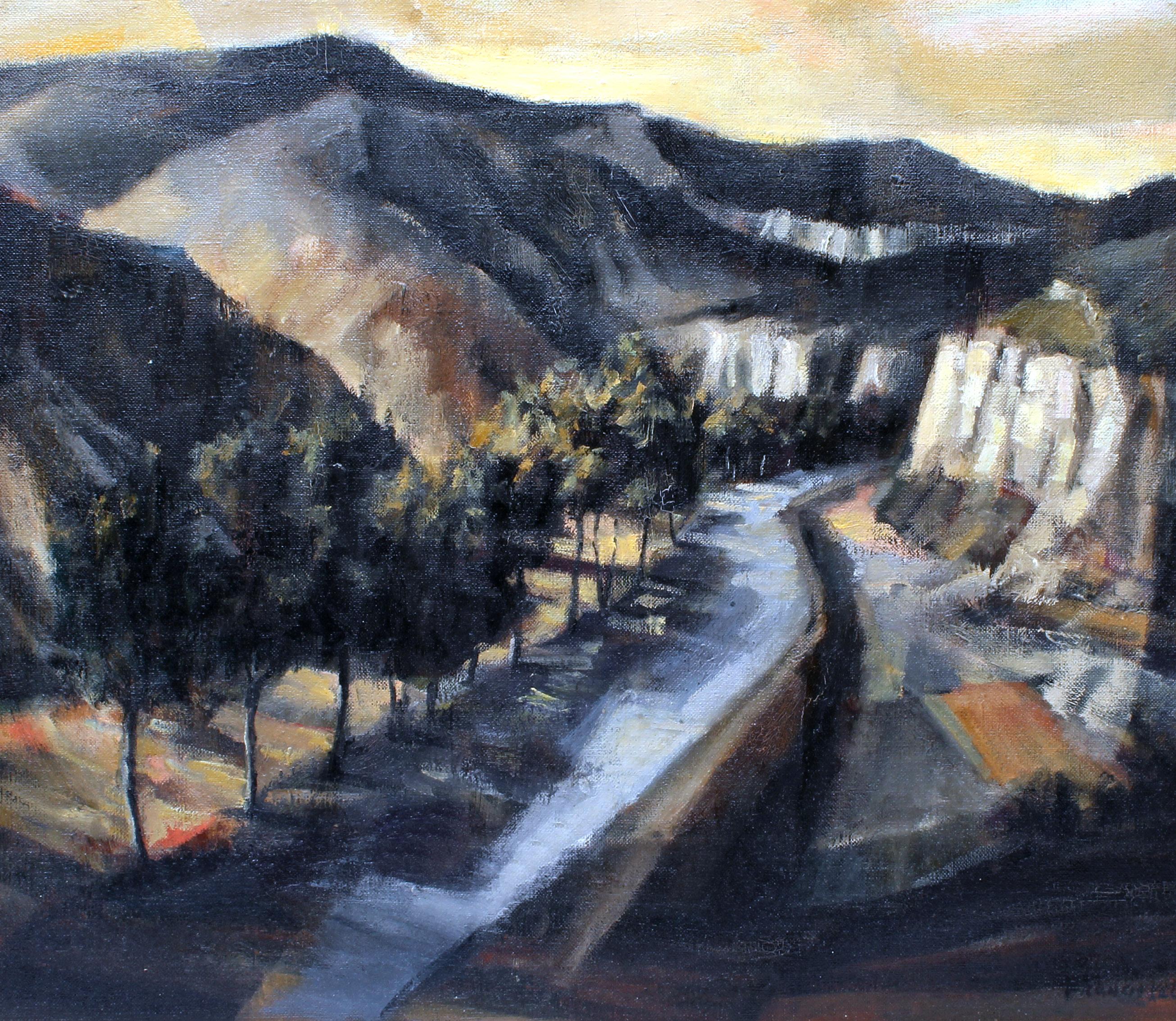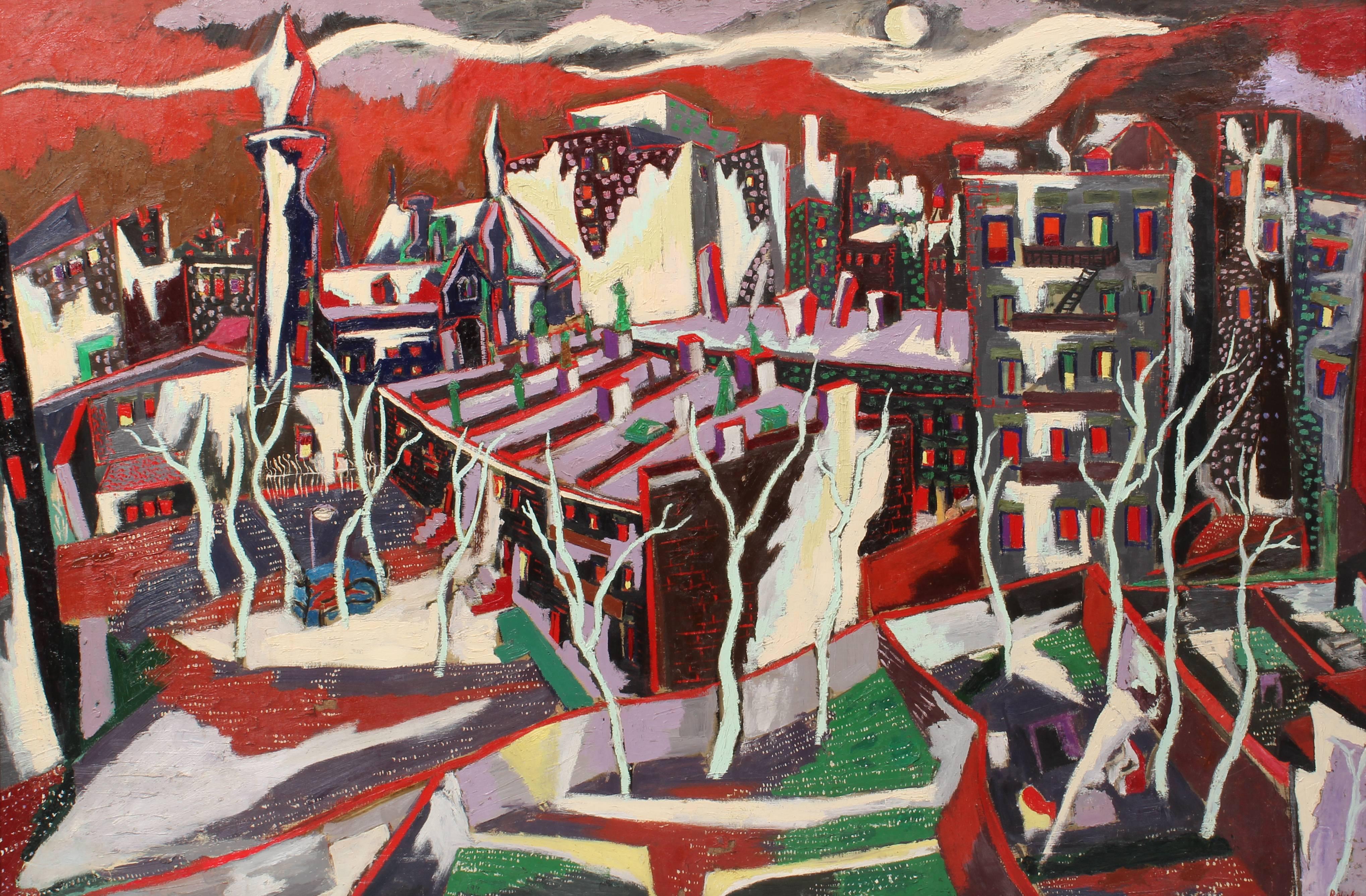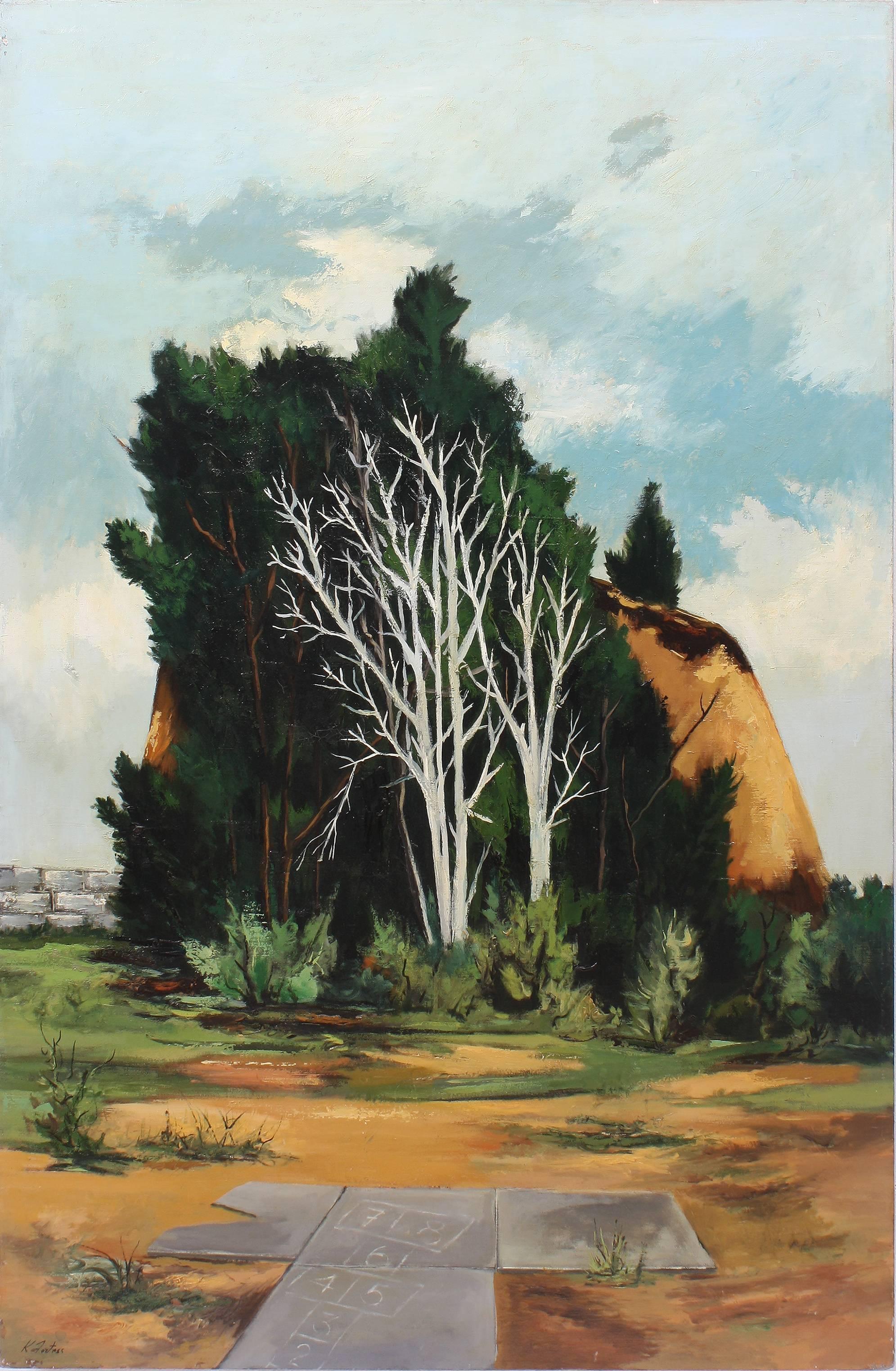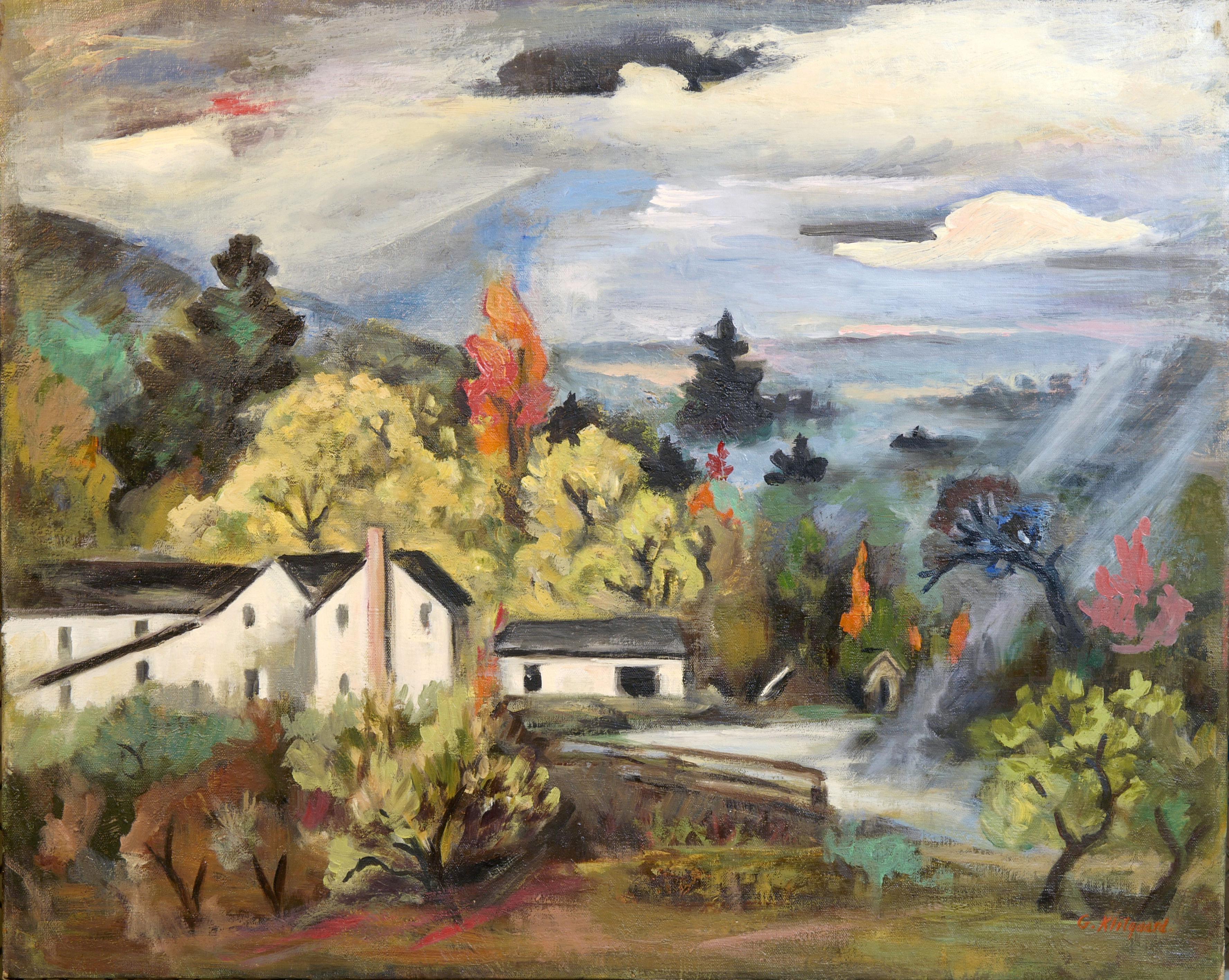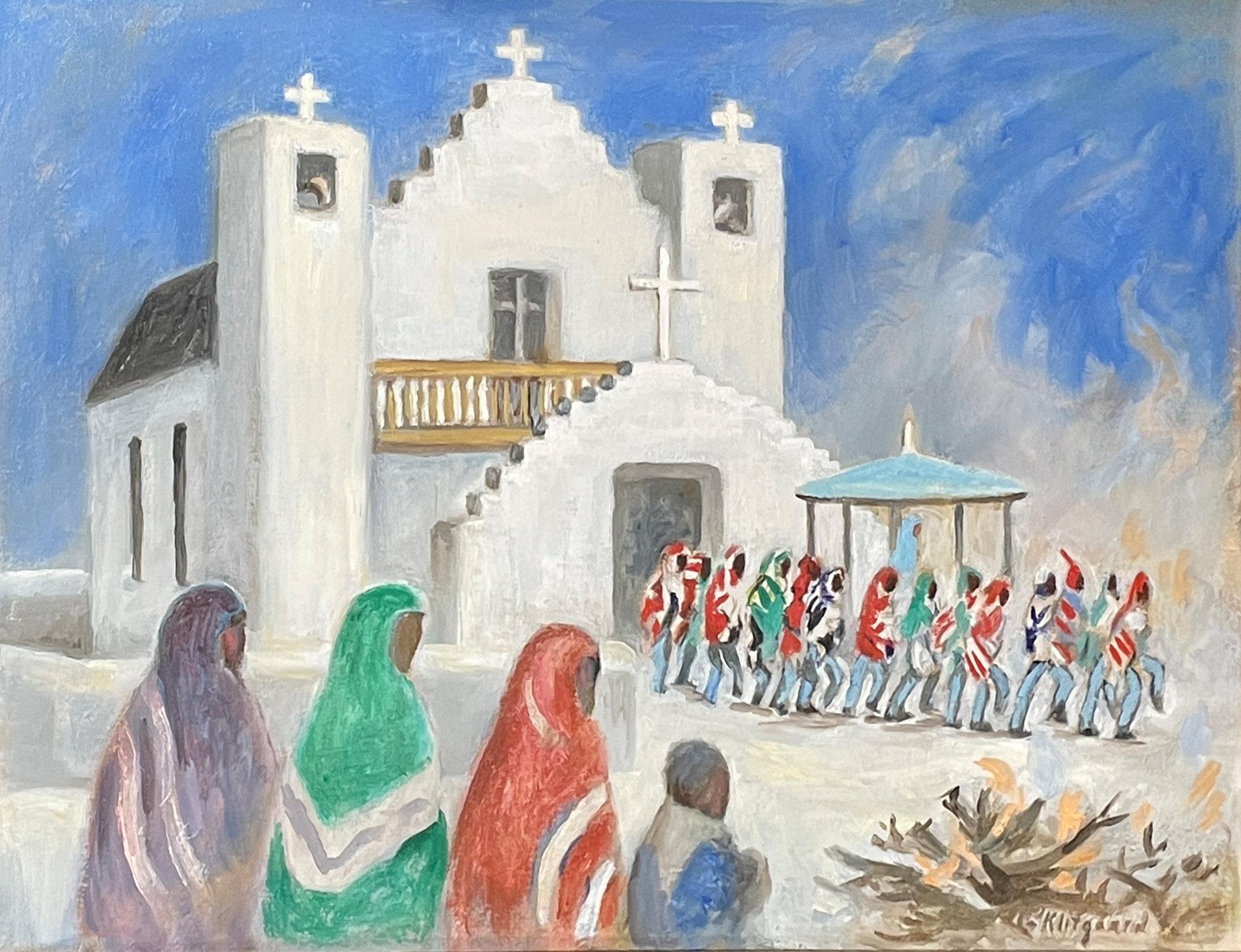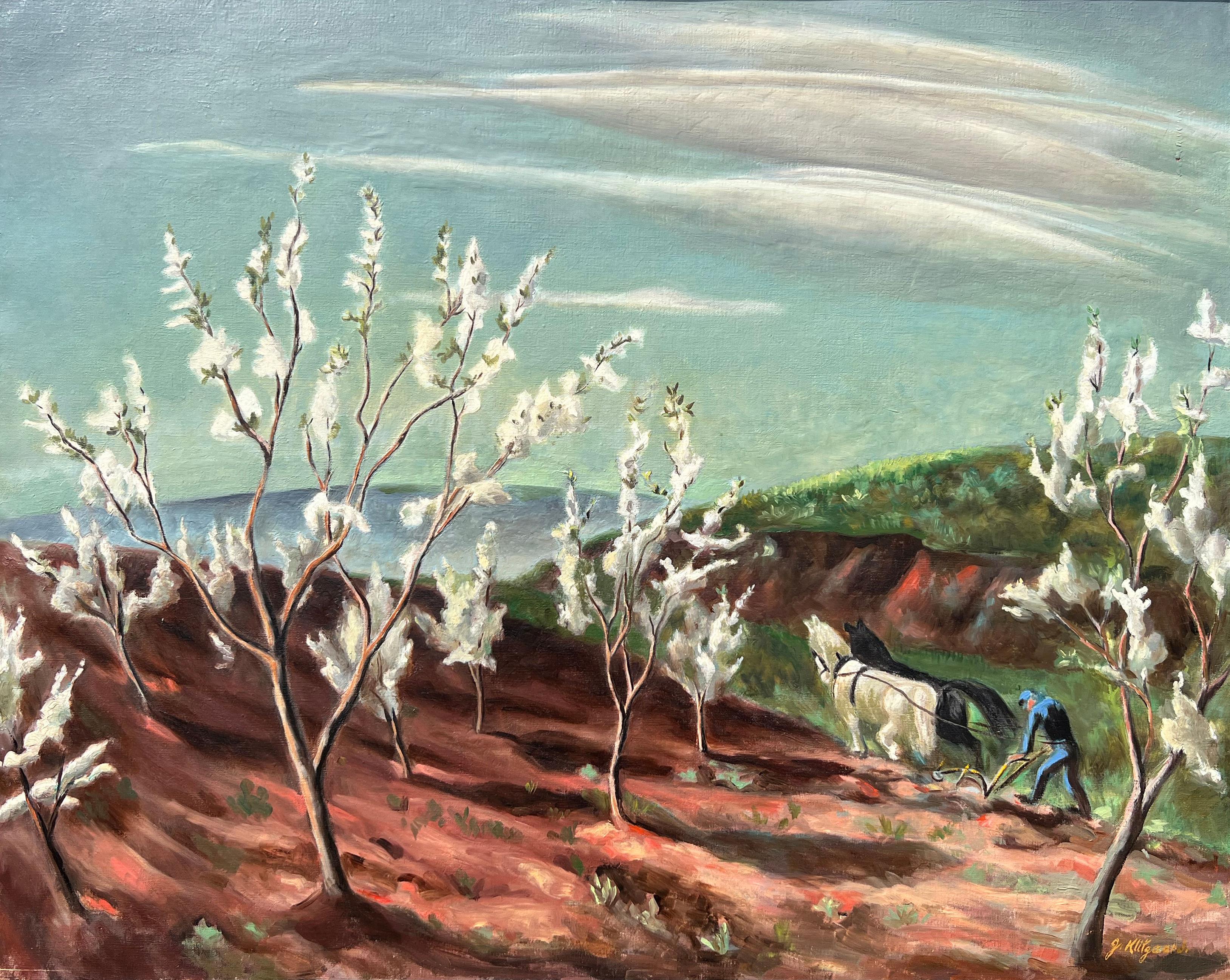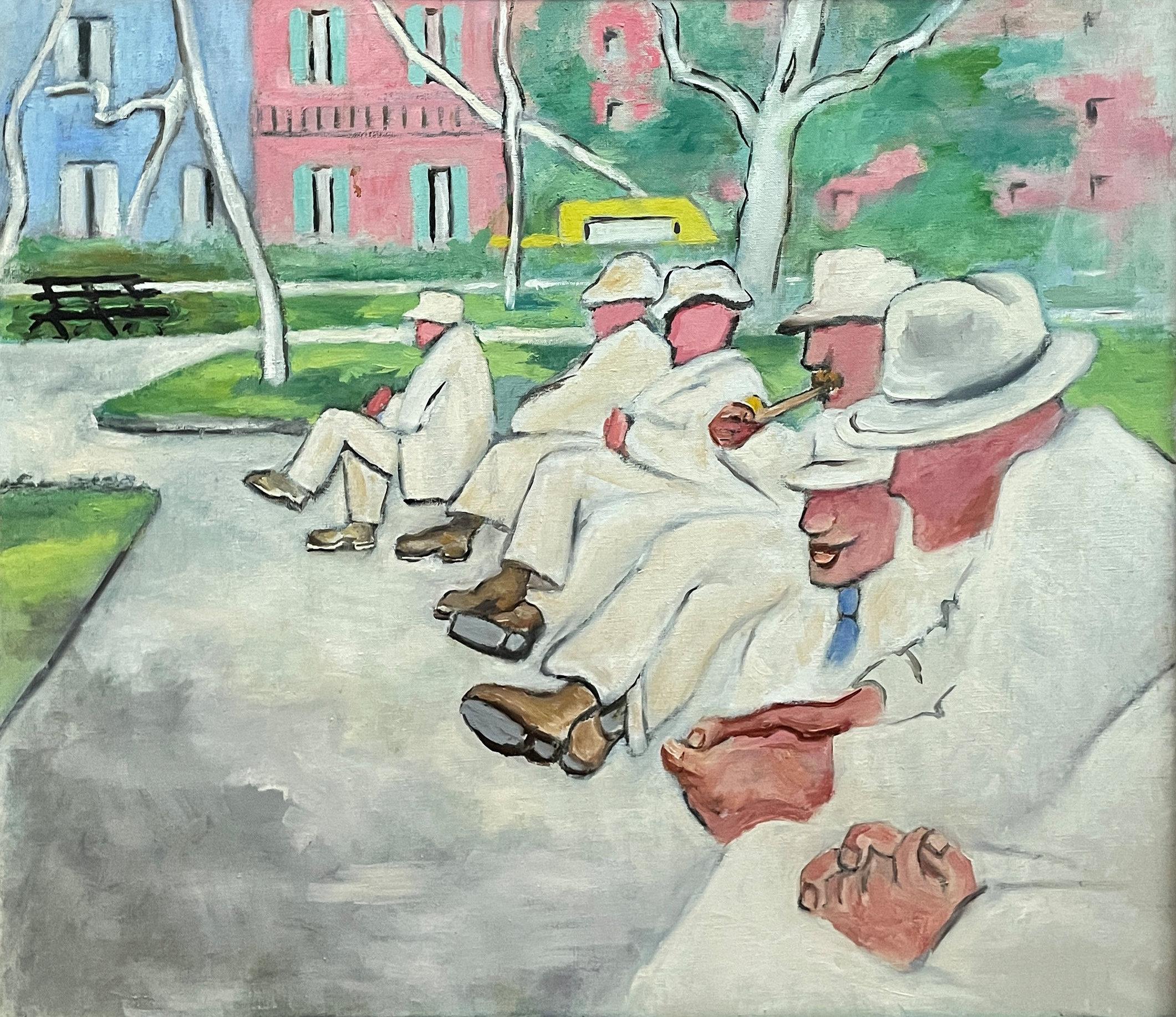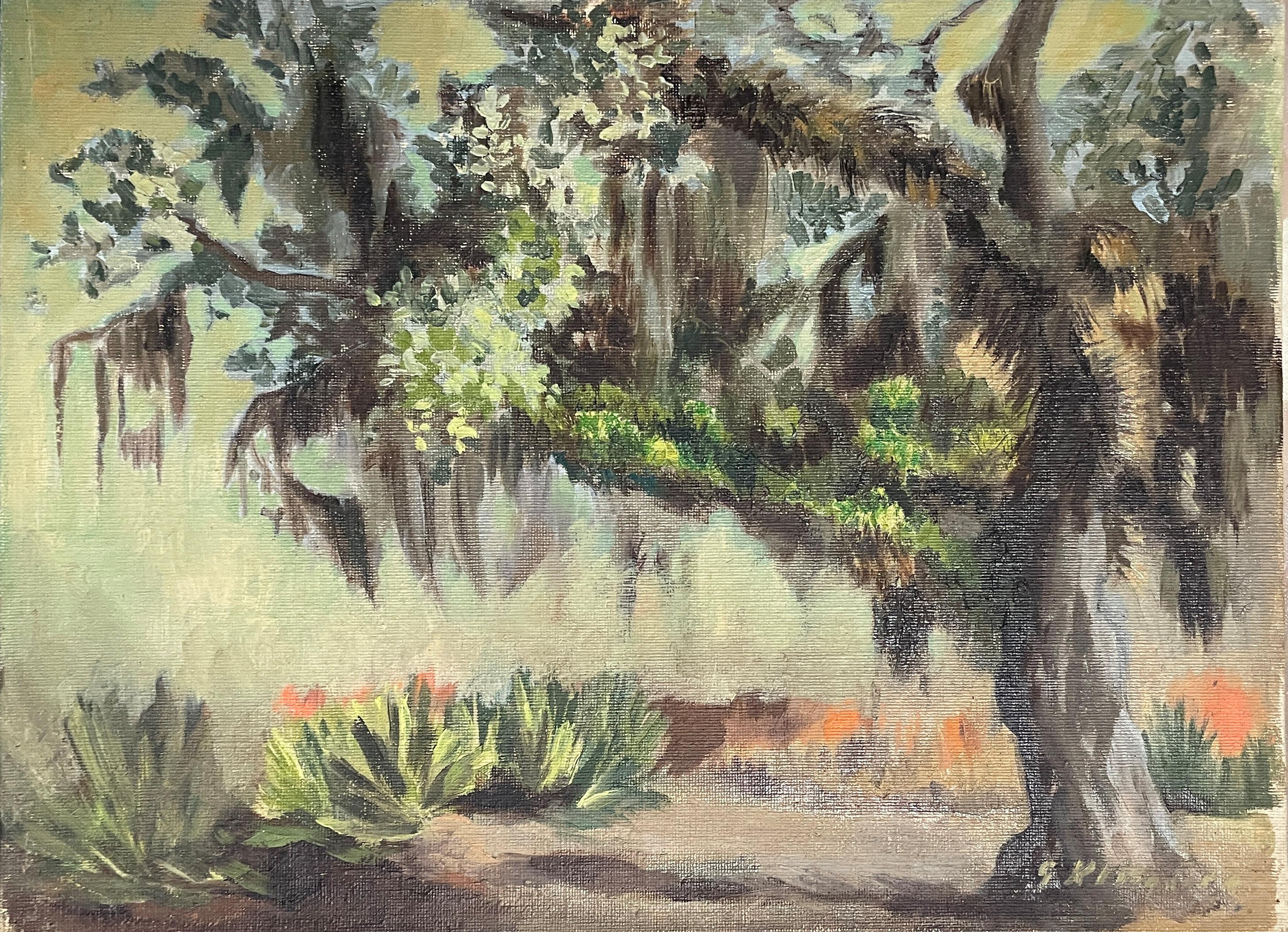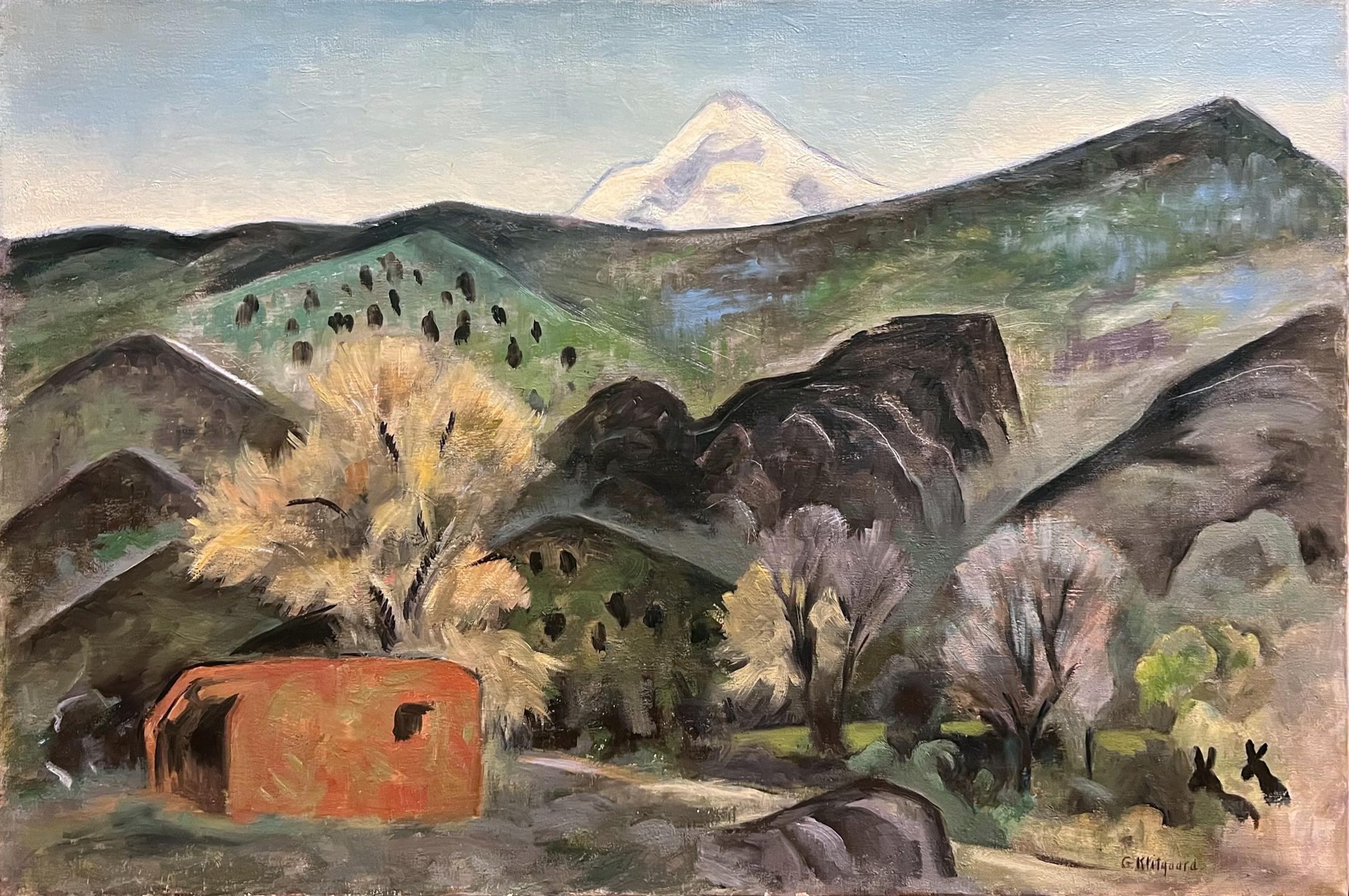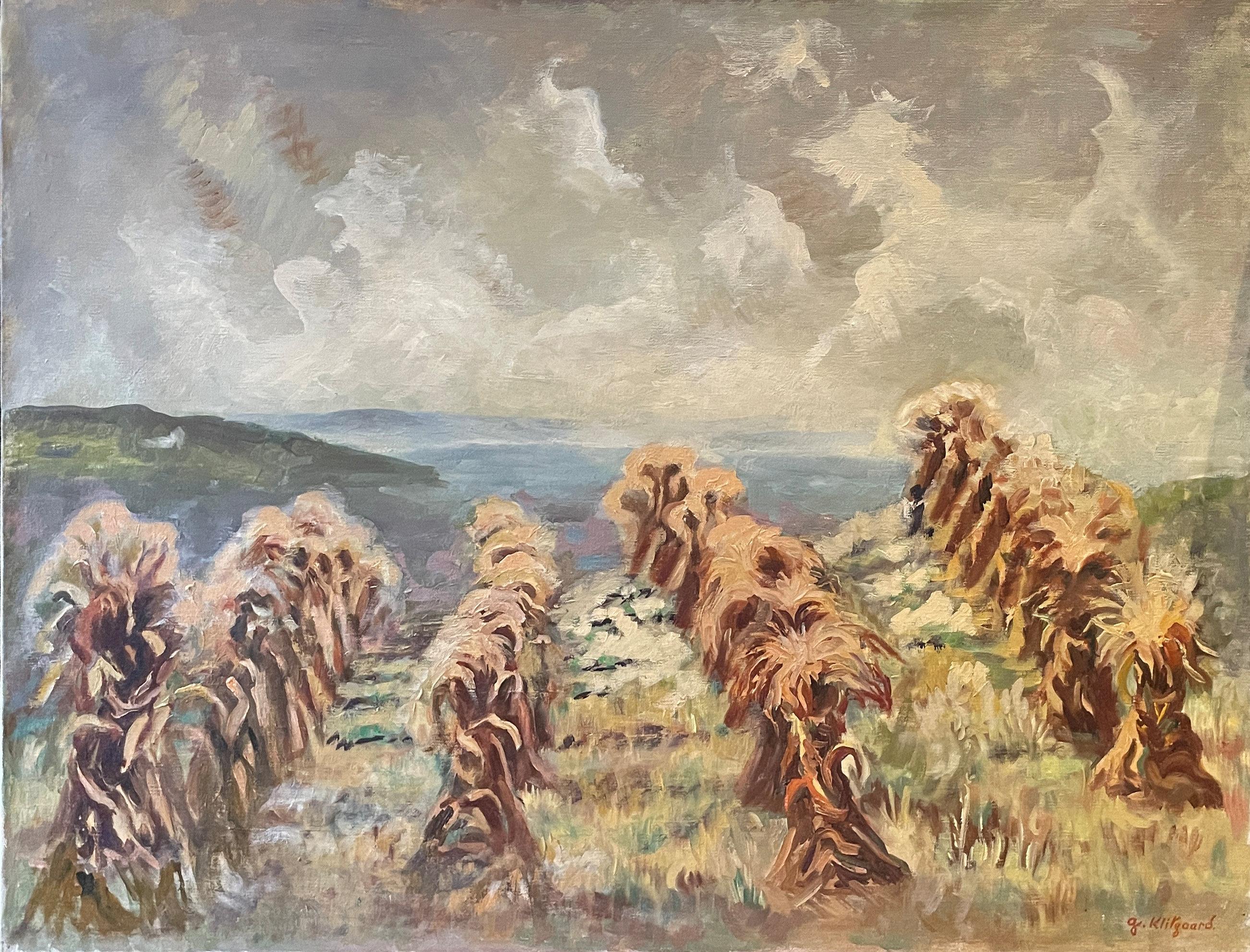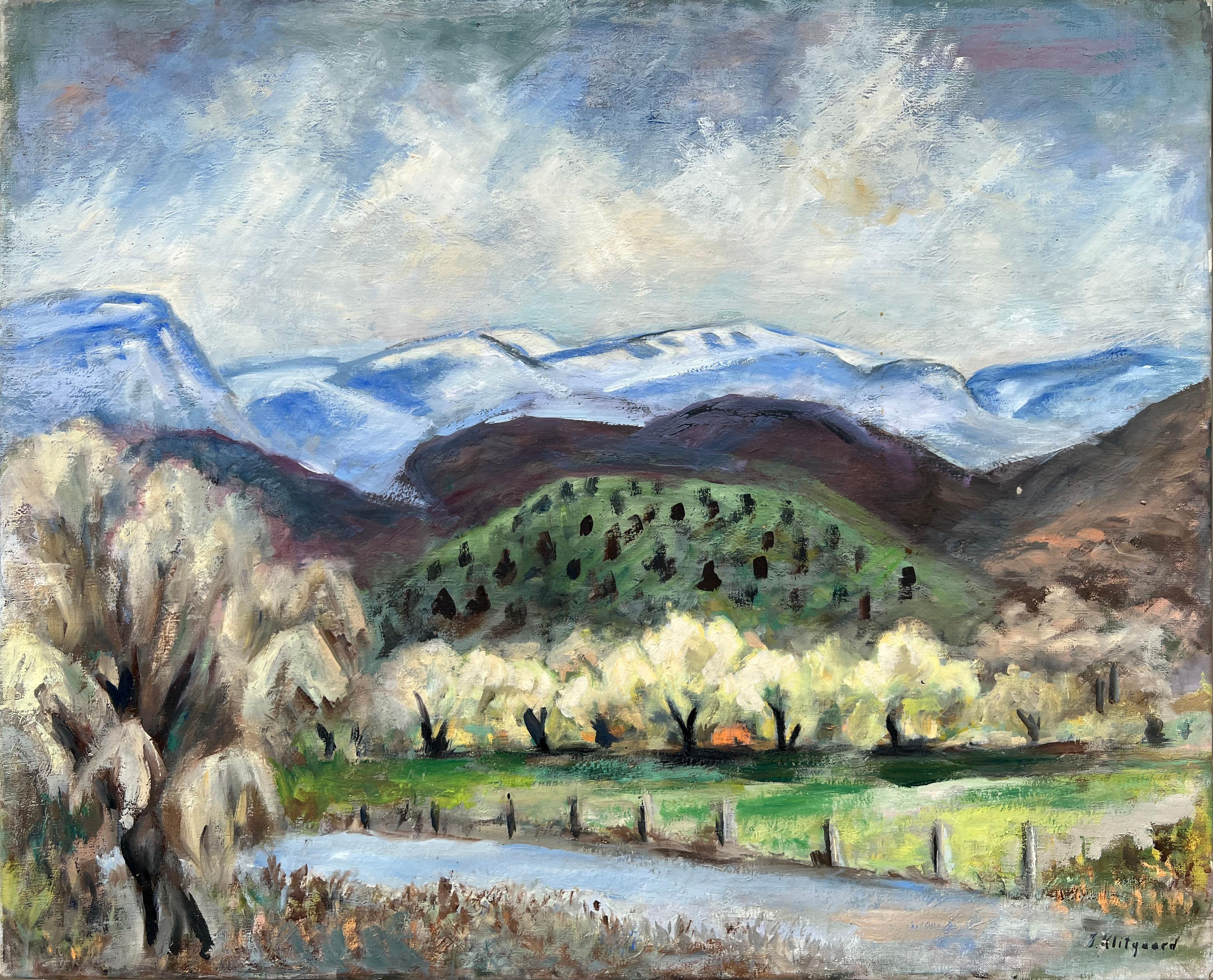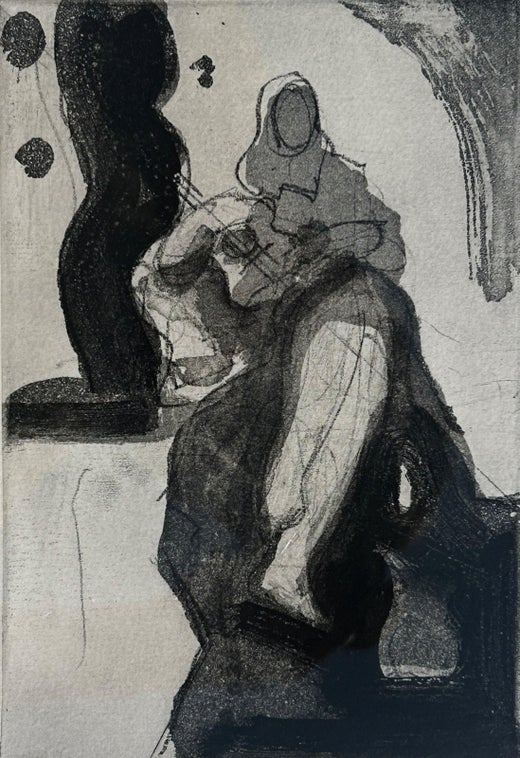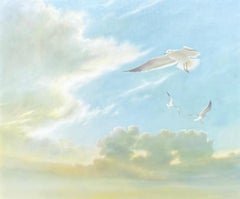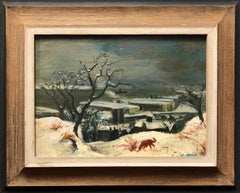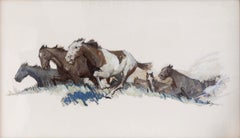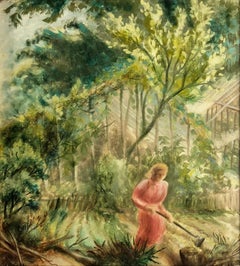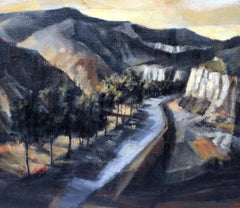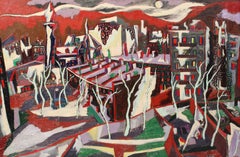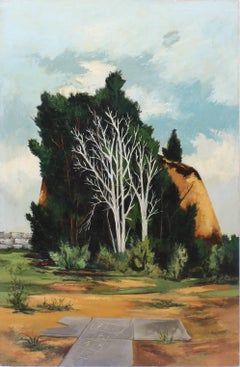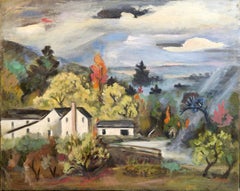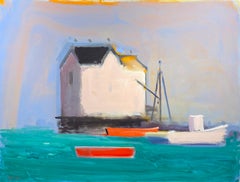
Green Water
Video Loading
Want more images or videos?
Request additional images or videos from the seller
1 of 9
Paul ResikaGreen Water1992
1992
About the Item
- Creator:Paul Resika (1928, American)
- Creation Year:1992
- Dimensions:Height: 28 in (71.12 cm)Width: 36 in (91.44 cm)
- Medium:
- Movement & Style:
- Period:
- Condition:
- Gallery Location:Missouri, MO
- Reference Number:1stDibs: LU747310383112
Paul Resika
Paul Resika (b.1928-) is an abstract figurative and landscape painter whose paintings are meditations on nature. Notable for their geometric forms placed against a mixed palette of high-keyed and subdued color, Resika's paintings create striking oppositions between form, color, and light. Like the paintings of Bonnard, Resika's work encapsulates the hidden power of nature with its color and forms. Resika himself states that he strives to capture "a feeling for nature but without nature." His work blends the figurative with the abstract in such a way that one senses Resika's response to both his physical and interior worlds. Born in New York City, Resika studied with Hans Hofmann in the 1940s and received his first show at age nineteen, at New York's George Dix Gallery in 1948. He was part of what is now considered the second generation of the New York School—artists who applied abstract expressionist techniques, such as the emphasis on gesture and emotional immediacy to the depiction of representational subject matter. During the 1950s, Resika traveled in Europe and began developing the series of recurring pared-down, quasi-abstract motifs: piers and harbors, farmhouses, floral still lifes, female figures. The tradition of French modernist painting, specifically the work of Pierre Bonnard and the French Fauvist painters Matisse and Derain, is strongly evinced in his work. Currently Resika spends winters in New York City, summers i n Provincetown, Massachusetts, and one month each spring in southern France. Each locale and its accompanying season informs his work and plays an important role in his choice of subject matter and palette. Resika was elected to the National Academy Design in 1976 and to the American Academy of Arts and Letters in 1994. He has exhibited both in the United States and abroad. His works are included in the collections of the Metropolitan Museum of Art, New York, and the National Museum of American Art in Washington, D.C.
About the Seller
5.0
Vetted Professional Seller
Every seller passes strict standards for authenticity and reliability
Established in 1970
1stDibs seller since 2017
155 sales on 1stDibs
Typical response time: 1 to 2 days
Authenticity Guarantee
In the unlikely event there’s an issue with an item’s authenticity, contact us within 1 year for a full refund. DetailsMoney-Back Guarantee
If your item is not as described, is damaged in transit, or does not arrive, contact us within 7 days for a full refund. Details24-Hour Cancellation
You have a 24-hour grace period in which to reconsider your purchase, with no questions asked.Vetted Professional Sellers
Our world-class sellers must adhere to strict standards for service and quality, maintaining the integrity of our listings.Price-Match Guarantee
If you find that a seller listed the same item for a lower price elsewhere, we’ll match it.Trusted Global Delivery
Our best-in-class carrier network provides specialized shipping options worldwide, including custom delivery.More From This Seller
View AllSeagulls (Birds in Flight)
Located in Missouri, MO
Seagulls (Birds in Flight), 1982
By. Jim Palmer (American, b. 1941)
Signed and Dated Lower Right
Unframed: 32" x 36"
Framed: 37" x 42.5"
Born in 1941 in Columbia, South Carolina, Jim Palmer attended the University of South Carolina in 1960 before going on to study at the Atlanta School of Art in 1964. In 1966 he and his wife moved to Hilton Head Island, the second artist to do so during the Island's early years. Since living here, he designed the cover of the Chamber of Commerce' Islander Magazine, has been a contributing artist to the Island Events Magazine, and has painted many Low Country scenes that grace homes and businesses throughout the country.
Palmer was the illustrator for two books written by local authors: A Corner of South Carolina and Moonshadows. His work has been included in exhibits at the Hunter Museum in Chattanooga, TN; Mint Museum, Charlotte, NC; Southeastern Artists Exhibition, Atlanta, GA; Greenville County Art Museum, Greenville, SC; Callaway Gardens, Pine Mountain, GA; and Bay Hills Club, Orlando, FL.
His paintings are part of the private collections of C&S National Banks in Columbia and Hilton Head Island; Banker's Trust Tower, Columbia, SC; Palmetto State Bank, Bluffton, SC, among others. Several paintings are also included in the collections of former Presidents Jimmy Carter and Dwight Eisenhower, former South Carolina Governor Robert McNair and singer John Denver.
Category
1980s American Modern Animal Paintings
Materials
Canvas, Oil
Price Upon Request
Snow and Gray Sky with Rusty
By Cecil Crosley Bell
Located in Missouri, MO
Cecil Crosley Bell
"Snow and Gray Sky with Rusty" c. 1950
Oil on Panel
Signed Lower Right
*Original Kraushaar Galleries, New York Label on Verso
** There is another landscape painti...
Category
1950s American Modern Landscape Paintings
Materials
Oil, Panel
Price Upon Request
The Painted Stallion
By William Henry Dethlef Koerner
Located in Missouri, MO
The Painted Stallion
William Henry Dethlef Koerner (German, American, 1878-1938)
Oil on Panel
Signed Lower Right
Titled Verso
21.5 x 37 inches
26.5 x 42.5 inches with frame
Written ...
Category
Early 20th Century American Modern Landscape Paintings
Materials
Oil, Panel
Tending the Garden
By Robert Elton Tindall
Located in Missouri, MO
Robert Elton Tindall (1913-1983)
"Tending the Garden" (Girl with a Hoe) c. 1940
Egg Tempera with Resin Oil Glazes on Panel
Signed Lower Left
Site: 10 x 9 inches
Framed: 15 x 14 inch...
Category
Mid-20th Century American Modern Figurative Paintings
Materials
Egg Tempera, Wood Panel
Price Upon Request
Better World Version I
By Peter Max
Located in Missouri, MO
Better World Version I
Peter Max (German, b. 1937)
Acrylic on Canvas
24 x 9.75 inches
36 x 21.5 inches with frame
Signed lower right
Known throughout the world and a household name in America, Max is known for his new age style cosmic imagery and multi-colored blends. During the late 60's and early 70's his colorful art reached millions of people and he won numerous major awards for his work. His paintings, drawings and limited edition graphics have been exhibited in major museums throughout the world. He works in multiple media, including oil, acrylics, water colors, fingerpaints, dyes, pastels, charcoal, pen, multi-colored pencils, etchings, engravings, animation cels, lithographs, serigraphs, ceramics, sculpture, collage, video, xerox, fax, and computer graphics. He also includes mass media as a "canvas" for his creative expression.
Peter Max was born in Berlin, Germany, and spent his childhood in Shanghai. From China, the family went to Tibet for a year, and then on to Israel. His family's odyssey continued to Paris, and finally, at the age of 16, Max arrived in the United States. He began his art studies in New York at the Art Student's League and continued at the Pratt Institute and School of Visual Arts.
Max often uses American symbols in his artwork and has done paintings and projects for presidents Ford...
Category
21st Century and Contemporary Modern Landscape Paintings
Materials
Canvas, Acrylic
Price Upon Request
Cherry Blossom Near Washington Bridge
By Peter Max
Located in Missouri, MO
Cherry Blossom Near Washington Bridge
Peter Max (German, b. 1937)
Acrylic on Canvas
16 x 20 inches
27 x 32 inches with frame
Signed lower right
Known throughout the world and a household name in America, Max is known for his new age style cosmic imagery and multi-colored blends. During the late 60's and early 70's his colorful art reached millions of people and he won numerous major awards for his work. His paintings, drawings and limited edition graphics have been exhibited in major museums throughout the world. He works in multiple media, including oil, acrylics, water colors, fingerpaints, dyes, pastels, charcoal, pen, multi-colored pencils, etchings, engravings, animation cels, lithographs, serigraphs, ceramics, sculpture, collage, video, xerox, fax, and computer graphics. He also includes mass media as a "canvas" for his creative expression.
Peter Max was born in Berlin, Germany, and spent his childhood in Shanghai. From China, the family went to Tibet for a year, and then on to Israel. His family's odyssey continued to Paris, and finally, at the age of 16, Max arrived in the United States. He began his art studies in New York at the Art Student's League and continued at the Pratt Institute and School of Visual Arts.
Max often uses American symbols in his artwork and has done paintings and projects for presidents Ford...
Category
21st Century and Contemporary Modern Abstract Paintings
Materials
Canvas, Acrylic
Price Upon Request
You May Also Like
Modernist American Landscape Painting 1950 Mountain Shadow Rare Framed Tranquil
By Francis Kelly
Located in Buffalo, NY
Wonderful modernist landscape painting.
Francis Kelly was born in 1927 in St. Paul, Minnesota. He received his early education in Chicago and California. He served in the United States Navy from 1944 to 1948 when he entered the Art Center School, Los Angeles. During 1951 in 1952 he lived in Paris, attending the Academie de la Grande, Chaumiere. In 1953 he went to the University of Hawaii, Honolulu, and then to the University of California at Los Angeles, where he was graphic laboratory assistant to John Paul Jones.
Awarded a Fulbright Grant in 1955 he came to the Graphic Department of the Central School, London. The St. George's Gallery first introduced his etchings in Britain. In 1958 Kelly was awarded the Stacy Grant for painting. His work has been shown at Royal Academy Exhibitions and he has traveled extensively.
In 1966 he was appointed Art organizer for the U.S. Embassy "Festival of Arts in Humanities". His paintings were shown in the exhibition "Five American Artists in Britain". During 1976 he acted in a similar capacity on behalf of Windsor & Newton Ltd., who sponsored an exhibition of American artists commemorating the U.S. Bicentennial. He appeared in the film Science in Art.
Kelly has studied painting conservation at the Courtald Institute. In 1967 he was sent to the Italian Art and Archives Rescue Fund to Florence to restore flood damaged paintings. In 1971 his book, Art Restoration, was published by David and Charles and in the U.S. by McGraw-Hill. His second book, The Studio and The Artist was published in 1975.
Kelly's work has been shown at 24 museums in Great Britain and numerous galleries. Acquisitions have been made by many public and private collections, universities and educational services.
During more than 40 years in Britain he has found a growing affinity with the countryside, observing less the well-known landmarks but rather more the timeless rural lanes and by-ways as yet still unspoiled by building and industry. A member of the group in Brighton preserving Brighton's West Pier, he has produced a series of works recording the ravages of time on this finest of Victorian structures.
Category
1950s American Modern Landscape Paintings
Materials
Canvas, Oil
Modernist Cityscape
By Esther Rollick
Located in Buffalo, NY
An original modernist oil painting by American female artist Esther Rollick.
Category
1940s American Modern Landscape Paintings
Materials
Canvas, Oil
Modernist Landscape with a Hop Scotch Board
By Karl Fortress
Located in Buffalo, NY
A modernist oil painting by New York modernist Karl Fortress (1907-1993). The painting has provenance from the Cornell Art Museum. In excellent original condition. Signed lower le...
Category
1930s American Modern Landscape Paintings
Materials
Canvas, Oil
"Newton’s Farm" Georgina Klitgaard, Modernist Hazy Autumn Landscape Painting
By Georgina Klitgaard
Located in New York, NY
Georgina Klitgaard
Newton’s Farm
Signed lower right
Oil on canvas
24 1/2 x 30 1/2 inches
Georgina Klitgaard’s art has sometimes gotten lost in the critical propensity to assign art...
Category
Early 20th Century American Modern Figurative Paintings
Materials
Canvas, Oil
"Pueblo Indians, Taos, New Mexico" Georgina Klitgaard, Modernist Figures
By Georgina Klitgaard
Located in New York, NY
Georgina Klitgaard
Pueblo Indians, Taos, New Mexico
Signed lower right
Oil on canvas
18 x 24 inches
Georgina Klitgaard’s art has sometimes gotten lost in the critical propensity to...
Category
Mid-20th Century American Modern Landscape Paintings
Materials
Canvas, Oil
"Spring Ploughing" Georgina Klitgaard, Modernist American Farmed Landscape
By Georgina Klitgaard
Located in New York, NY
Georgina Klitgaard
Spring Ploughing
Signed lower right
Oil on canvas
34 x 42 inches
Georgina Klitgaard’s art has sometimes gotten lost in the critical propensity to assign artists ...
Category
1940s American Modern Landscape Paintings
Materials
Canvas, Oil
